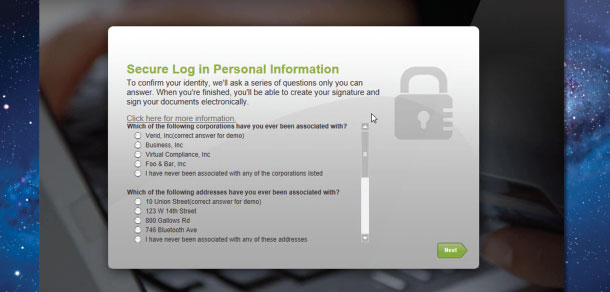Online identity vetting for state benefits
Health care ushers in secure access for citizen e-services
02 September, 2014
category: Corporate, Digital ID, Government, Health, Library
Keystone State, keystone ID
Pennsylvania has been hard at work on its own NSTIC pilot that promises to create secure, trusted online identities for use across organizational and institutional boundaries, spanning both the public and private sectors.
The program partnered with the Department of Public Welfare to make use of its service and citizen directory, says Erik Avakian, chief information security officer for the Commonwealth of Pennsylvania. “The Department of Public Welfare maintains a lot of data on a lot of people,” he says.
Anybody can sign up for an account that gives residents basic access, but there’s no level of identity with that. “If they want to sign up for welfare benefits or other secure services, they have to provide a certain level of identity validation,” he explains.
The resulting account, a Keystone ID, is a single point of access from which the citizen can attain commonwealth services. As Avakian explains, the Keystone ID can be used for numerous applications across the enterprise.
The agencies that are currently participating in the Pennsylvania pilot are the Department of Public Welfare, the Office of Administration and the Department of Health. Avakian says there have also been talks with Pennsylvania’s Department of Education.
Like most states, a primary challenge for Pennsylvania – and a reason for pursuing the NSTIC pilot – was the many, different agency systems throughout the commonwealth. “For welfare, as an example, they would have to log in and create the account, answer the security questions and then be validated for only that application,” says Avakian. “If that same person wanted to get a fishing license they would then have to go to a different agency’s website and register for that separately.”
Consolidation was the key for Avakian and his team. “Our goal is a single online identity for the commonwealth citizen for the purpose of conducting online transactions,” says Avakian. “We’re moving from multiple directories and applications to a consolidated directory, and accompanying Keystone ID, that leaves each citizen with one account from which they manage their various applications.”
The Keystone ID is the common tie that enables residents to access benefits applications so interoperability is a necessity. “We needed an interoperable identity credential that enabled access to services from any of our state agencies, whether welfare, health information or employment compensation,” says Avakian. “You’re then reducing fraud and the potential of identity theft because you’ve got identity verification and identity proofing in one system.”
While the new system will work with a wide range of state services, he sees particular promise in the health care sector.
With health related information there is a strong crossover between the public and private sector, and both sides would likely want to be able utilize that Keystone credential, explains Avakian.
Avakian explains that the ultimate goal for the project is to determine how the Keystone ID will work across both public agencies and private entities like those in health care. He anticipates that the system will go live in the third quarter of 2014.
What’s next?
At a rapid rate, health care and benefits applications are going digital, giving rise to a new host of identity challenges. With more people entering health care systems following the Affordable Care Act, the need to properly, effectively and efficiently vet an individual’s identity has become a vital concern.
States are certain to continue down this path, offering federated high-assurance identities to citizens. While the process is beginning in the benefits arena, it is likely that the lessons learned and technologies deployed will one day extend across state services from Medicaid and unemployment all the way down to a fishing license.
As the work being done by NSTIC pilot participants and data providers progresses, it will likely be the collaboration between the public and private sectors that will provide a safe, secure and interoperable online identity.




